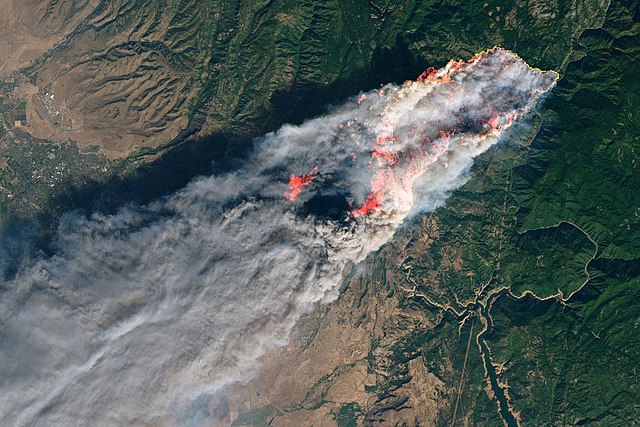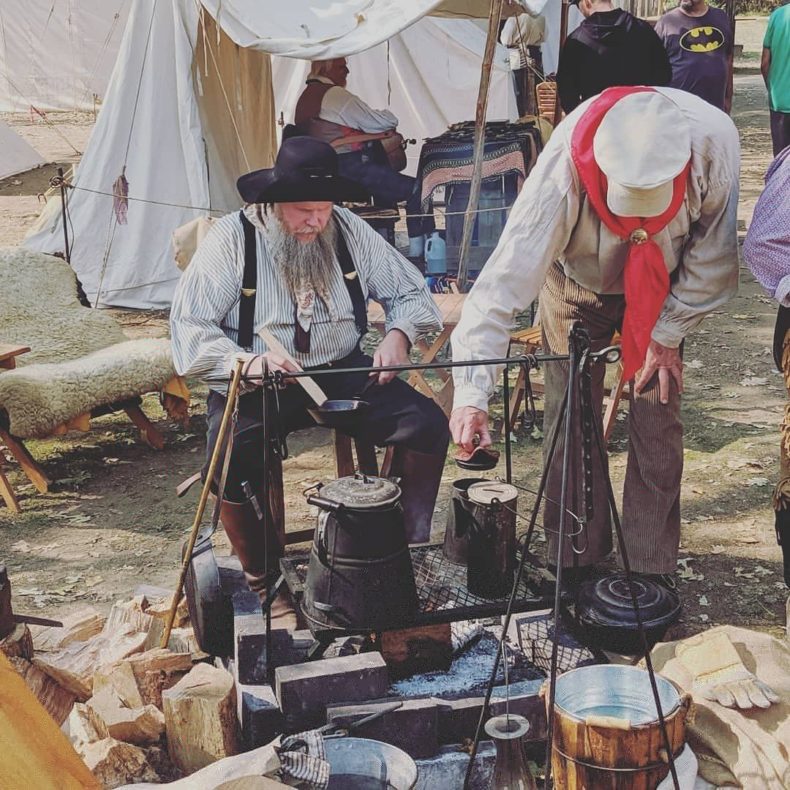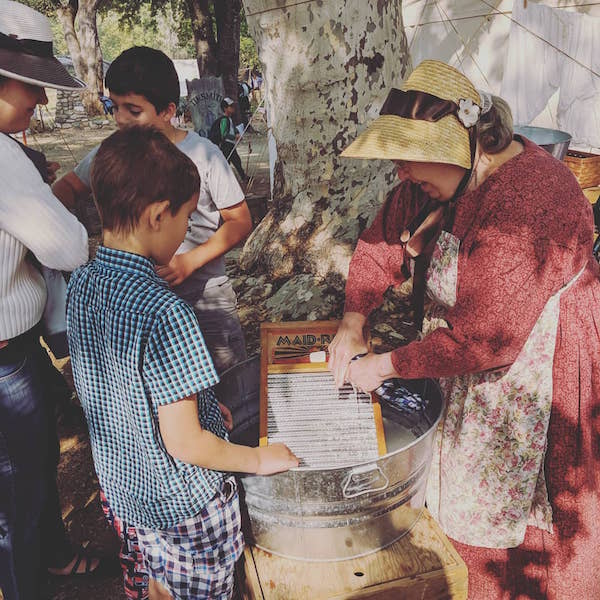
A few weeks ago, my boyfriend and I got up before dawn, turned on our headlamps to find our shoes, and went for a run. It was cold enough that we could see our breath in the air, but we were sweaty by the time we got back to the trailhead. After our run, we went to the river to take a bath. The water was about 55 degrees Fahrenheit, so we splashed ourselves as quickly as possible, using the biodegradable peppermint soap we take on camping trips. When I dunked to wash the soap out of my hair, I rose up shrieking from the cold.
That was back in October, when we still thought California’s first massive statewide blackout was kind of fun. Sure, we had no running water, because we need electricity to pump it out of our well, but how often did we really need to bathe, or flush our toilets? Weren’t we better off without Internet anyway, at least for a day or two? Besides, we were lucky: neither of us has a lifesaving medical device that requires power to operate, or kids that need to be fed and entertained when the schools shut down.
As the powerless days dragged into a week, we let dishes stack up in the sink and cooked enchiladas outside over coals in a Dutch oven. We borrowed a friend’s generator for a few hours each day to keep the food in our refrigerator cold and charge our phones. It was like camping, we told ourselves. We like camping.
That was a month ago. Yesterday, when my phone pinged with another notification from the Pacific Gas & Electric company, saying that we will likely lose power again Wednesday and Thursday, I finally joined the howling millions of Californians who are cursing the utility. Projected to affect more than 600,000 people, this outage marks the third time Pete’s school will likely close, the third time I’ll have to scramble to find a place with internet to work for a few days. As I write this, I’m packing an overnight bag and planning to stay with friends in Sacramento.
Looking around the Sierra Nevada foothills where we live, it’s not difficult to grasp why PG&E is shutting off power here. Dessicated by climate change-related heat and drought, the oak trees here are bone dry, their brittle branches entangled with thousands of miles of aged, poorly maintained power lines. Branches snap in the mildest wind, and even when there’s no wind at all. Last weekend, for example, an oak branch on my family’s property spontaneously broke and fell onto a powerline, causing a transformer to explode. There was a small fire, but the fire department arrived in time to put it out. On a windy day, the situation could have rapidly spiraled out of control, as it did when one of PG&E’s transmission towers sparked the Camp Fire in 2018, killing 86 people.
Going forward, PG&E claims that the only safe way to ride out hot, windy days is to “de-energize” the grid. I accept this, in part because I know that by choosing to live in a remote, wooded area, I am part of the problem. What’s harder to accept is that these outages are likely to continue with more or less the same frequency for the next 10 years, as PG&E’s CEO William D. Johnson suggested in October.
What’s to be done? There are many recommendations, ranging from “hardening” energy transmission systems through measures like burying power lines, to better forest management, to addressing the lack of affordable housing that forces many people out of cities into wildfire prone areas. But perhaps the most important task, energy wonks argue, is to rejigger California’s massive, centralized power grids to accomodate local “microgrids,” miniature networks that are still hooked up to the big grid, but can also operate on their own. (Full disclosure, my sister is one of these energy wonks. She works for the solar company Sunrun, which advocates for precisely such distributed energy systems in California and around the country, powered by solar panels.)
Financing smaller, more distributed power networks is tricky for individual communities, so pulling this off will require big investments from the state — though microgrids are looking ever more affordable as traditional power gets steadily more expensive and less reliable. It will also require big utilities like PG&E to start supporting microgrids, rather than opposing them, as they have historically been wont to do.
One day during the last power outage, Pete and I wandered through our local state historic park, the James Marshall Gold Discovery State Park. Undeterred by the lack of power, docents in bonnets and long underwear were reenacting the 1850s California Gold Rush for the benefit of hundreds of fourth graders, many of whom visit the park to fulfill the state’s social science requirement.

Most of the fourth graders who visit Coloma learn a fairly soft-focus version of the Gold Rush, which omits much about the genocide of indigenous people and the period’s unparalleled environmental destruction. Mostly the kids learn to pan for gold. When they leave the park, I sometimes worry that that most carry away little more than the tiny golden flakes that docents plant for them to find in troughs of river sand and water.
Few, if any, of these schoolchildren learn about an element of Gold Rush history that directly connects to the blackouts: PG&E’s century-plus history of monopolizing power in California. After hydraulic mining — the practice of using powerful hoses to blast away entire mountainsides in search of gold — fell out of favor, PG&E quietly bought up most of California’s dams, flumes and ditches. Using these reservoirs, in the early 1900s the company built the state’s first hydroelectric plant, near Nevada City, and its first long distance power transmission line, which stretched 140 miles to Oakland. From there, the utility grew into the behemoth now being slammed for neglecting basic maintenance of its equipment while shelling out $4.5 billion in dividends to shareholders.

Watching children learning to scrub their clothes on an old-fashioned washboard — a handy skill in a state without power — I wondered what we’ll be teaching California schoolkids a century from now. Maybe they’ll still come to Coloma, but from communities powered entirely by distributed microgrids powered by wind and solar. If we’re lucky, they’ll shake their heads in disbelief, unable to imagine the unwieldy nets of power that once transformed California into a populous superpower, then doomed it to burn.
Well done. I have been saying each community should be self sufficient for a long time. Back when the east coast had major blackouts.
I agree wholeheartily with you, how do we go about finding a better solution?
Not all fires in CA are started by PG&E. Most people don’t know how to use fire. We’ve discovered while trying to sell our house in Truckee, which was heated only by a wood stove along with passive solar and thermal mass, that buyers cringe when they see that wood stove. Our daughter finally informed us that the only way we’ll sell the property is to install a gas furnace. Apparently, Millennials don’t like wood stoves. Too much work and bother. It was my turn to cringe. Also, because of the design of the house, a down-scaled Vermont passive solar design, most people don’t like the look of the place. It’s just too funky.
If people are going to talk the talk of solar and non-fossil-fuel means of power and heat, they also need to give up their silly aesthetics about solar panels and funny looking houses designed to use nature rather than fight it. Oh, and microgrids can be powered by (gasp) atomic energy. Solar’s great on the surface, but we recently learned that the manufacture of panels is really dirty. The water used in the factory cannot be recycled. So what shall we do with it? I better stop here.
Bravo, Sue! I might add that abysmal state political leadership and the undue burdens by such laid upon PG&E are a big part of the problem, not to mention extreme environmental zealots obstructing any move toward thinning the overgrown forests and underbrush that decades of fire suppression have enabled.